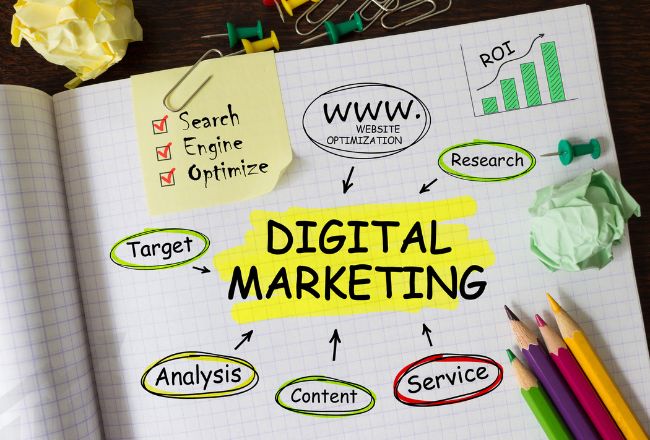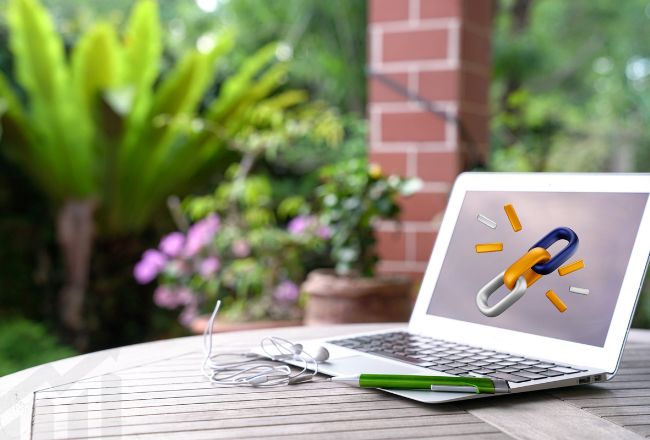
When your brand, products, or content gains popularity, people start mentioning and referring to them. This usually happens when you are all in on your branding strategies, expensive marketing campaigns, and paid ads.
At a certain point, you may get the impression that your popularity is already skyrocketing and that you must stop and let the customers flood your website.
However, this is precisely when you should double down, not step back, to fully leverage your brand’s traction. Gather low-hanging fruits, so to speak.
How can you do that? One way is by turning unlinked mentions of your brand or products into backlinks.
Understanding Unlinked Mentions
First things first. Let’s take a moment and explore the concept of non-linked mentions.
What Are Unlinked Mentions?
By unlinked or non-linked mentions, SEO practitioners understand any mentions of brand names, products, or services not formatted as links to relevant sources. In simple terms, unlinked mentions miss backlinks or hyperlinks.
However, it’s not only the formatting aspect that they miss; they miss out on something far more important – the opportunity to drive traffic to one’s business. So, whenever you run marketing advertising and PR campaigns, people will react by mentioning your brand in the following:
- Conversations on thematic forums (Reddit, Quora, Tapatalk);
- User review websites (Sitejabber, Trustpilot, Yelp);
- Comments under user-generated content online (Influenster, ResellerRatings);
- Social media posts and discussions (Instagram, Facebook, X, LinkedIn);
- YouTube video descriptions and shoutouts.
So, you essentially get an opportunity to take advantage of these mentions by transforming them into active backlinks (more on that later).
Why Non-Linked Mentions Matter for SEO
Non-linked mentions are the opportunities waiting to be unlocked. When transformed into active backlinks, they start to transfer link value (“juice,” speaking in professional SEO terms) and enhance the authority of one’s domain.
Furthermore, by converting unlinked brand mentions into backlinks, businesses can highlight the service they provide without needing to buy backlinks. Essentially, with this powerful technique, they enhance organic traffic flow and user acquisition without the need for further investments into expensive marketing tools and PR campaigns.
Monitoring & Analyzing Unlinked Mentions

Before turning non-linked mentions into backlinks, you first need to identify where they exist and assess their SEO potential.
How to Find Unlinked Mentions
In the age of AI and advanced digital tools, work requiring cognition represents a synthesis of human skills and the perks of technology.
It means if you are a good specialist, you can find non-linked mentions all by yourself, but that would be far less efficient than combining your human skills and the power of AI.
That said, some of the best SEO tools for monitoring unlinked mentions are:
- Ahrefs Alerts. Ahrefs is a famous SEO tool capable of doing all-around search engine optimization. Its unique feature, Alerts, allows automatic monitoring of brand mentions across a variety of platforms, websites, and forums.
- SEMrush’s Brand Monitoring. Semrush’s Brand Monitoring tool tracks mentions of your brand 24/7. It enables you to discover non-linked mentions and optimize your link building for mobile apps across the App Store and Google Play.
- Google Alerts is another all-around feature within Google’s ecosystem that enables real-time monitoring of brand and product mentions, including those of competitors. It is highly customizable, allowing you to filter results and avoid irrelevant mentions.
- Brandwatch, Mention, or Hootsuite can all help you listen to the buzz of social networks for instances of your brand mentions backlinks.
Analyzing the Quality of Non-Linked Mentions
Identifying unlinked brand mentions for SEO purposes is only half of the work. The other important half is assessing the value of your discoveries. We gave you several all-around SEO tools earlier for a good reason – they also allow you to effectively evaluate the value of your non-linked mentions.
Key factors to assess unlinked mentions include:
- Domain Authority (DA) & Page Authority (PA). Ahrefs, Moz, SEMrush, and other similar SEO tools feature powerful algorithms that can automatically assess DA, PA, and DR (Domain Rating). We recommend targeting only those domains whose DA rating score is 70 and higher.
- Traffic & Engagement Metrics. Ahrefs’ Site Explorer or SEMrush’s Traffic Analytics allows for gauging the referring website’s organic traffic – the higher the traffic, the more potential visitors you can get by turning uncredited mentions into valuable backlinks.
- Sentiment Analysis. Brandwatch or SEMrush’s Brand Monitoring also helps determine if the mentions are positive, neutral, or negative. Obviously, you don’t want to link to the negative mentions, do you?
Finally, top up the automatic analysis with your expert evaluation of the mention’s relevance to your niche and its placement & context. Targeting mentions buried deep in some comment sections or irrelevant discussions is far less promising than those found in editorial content, product reviews, or expert roundups.
Turning Uncredited Mentions into Backlinks

A good start equals half of the work done, they say. Though not with the unlinked brand mentions for SEO. Detecting and identifying mainly was done with the help of technology; however, reaching out to the relevant domains and web pages requires much more manual work.
Unfortunately, the technology is not there yet, and human soft skills have to come to the rescue.
How to Reach Out for Link Requests
Turning unlinked mentions into real backlinks is an art that requires a combination of persuasive communication, value-driven outreach, and personalization.
Here is a short step-by-step guide for you:
Identify the Right Contact Person.
The first step is identifying your contact person. If the contact information is not explicitly stated on the resource’s pages, you can still rely on tools like Hunter.io, or Voila Norbert to locate contact details.
A manual search on LinkedIn is also an option. Find your target company/organization, and look for the people who work there.
Craft a Personalized Outreach Email.
Email is still the king of outreach and relationship-building in our time. You must compose an email template (or find one online) to effectively reach out and persuade the person to transform your unlinked brand mention into an effective backlink.
Use a polite tone and concise, proper business language. Move straight to the offer, highlighting the benefits for the site owner/responsible person.
Highlight the Value of Adding a Link.
Convincing the person to add a link is a true art and a pivotal moment in all your work. You either get a positive response, or all your efforts are in vain. You need to explain how linking to your site enhances user experience and improves content credibility and SEO for the contact person’s website.
Be Prepared to Negotiate and Follow-Up.
The outreach is not only black and white, i.e., negative and positive responses can also be accompanied by questions, discussions, and bargaining with reciprocal requests to add a backlink to your site.
You need to be ready to offer a value exchange, such as posting their content in your blog (counter guest-posting request), contributing expert insights for their content, as well as placing their links on your pages.
And just when you think it’s too much of a manual hassle, technology comes back to make your work easier. Solutions like Salespanel can help you track your interactions with prospective partners and leverage the data to turn more unlinked mentions into backlinks.
Common Mistakes When Requesting Backlinks
For some people, too many instructions and best practices flying around have an opposite, detrimental effect on their motivation. Therefore, we’ve also prepared to take it the other way around.
Below is a short list of common mistakes to avoid when engaging in uncredited mentions outreach. Take them as a checklist whenever you contemplate requesting backlinks.
- Pouring too much “water” into the outreach email text.
- Using generic, copy-paste email templates that lack personalization.
- Not mentioning the exact unlinked mention and expecting the recipient to find it themselves.
- Using an overtly direct tone of voice that can be perceived as offensive.
- Neglecting to explain the value of adding a backlink into their copy.
- Addressing too many links in a single email/request (up to five is manageable).
Failing to follow up politely to an even negative response can cost your business too much publicity value. This is especially true if the contact person represents a domain with a high authority and rating that may turn useful for your mutual, far-going collaboration.
Maximizing the SEO Value of Your New Backlinks

Even when your outreach effort has brought you what you wanted, i.e., a positive response from a contact person, you can still do much more to maximize the SEO value of your backlinks.
The following best practices for link placement and anchor text will guarantee the best return on your efforts:
- Ensure the context around your link is a good match for your effort, i.e., relevant to the backlink and the anchor text and provides value to the reader. Suggestions on context improvement you can send to the site owner along with your outreach email.
- Use keyword-rich, descriptive anchor text. The anchor text should accurately reflect the linked content’s topic and contain at least one keyword.
- Prioritize backlinks placed in the texts that match the topic of the content on your website. For example, it makes little sense to link your handmade goods website to a motorcycle blog post.
- Ensure most of the backlinks you earn are the do-follow type, which brings more SEO value than the no-follow ones.
SEO experts also recommend regularly monitoring for broken or lost backlinks that can happen due to the site being moved, internal reorganization, or other reasons. If you spot a broken link that took you so much effort to establish, maybe it's worth reaching out again and fixing the problem.
The Bottom Line
Turning unlinked mentions into valuable backlinks is like claiming back what’s rightfully yours. Just like YouTubers monetize their video traffic, so should you aim to capitalize on your brand identity by converting non-linked mentions into active links.
A strong, diversified backlink profile will drive traffic and authority to your pages. This should happen on an ongoing basis, with a system of real-time mention detection and a routine for reaching out and establishing productive SEO relationships with high-authority websites.
Each reclaimed mention will add value to your online content, help it rank higher in search engine results pages, and contribute positively to your long-term SEO success.
- What are Unlinked Mentions in SEO? & How to Turn Them into Real Backlinks - October 29, 2025
- Is WordPress a Good Option for eCommerce? - October 28, 2025
- How to Start an Online Business When You’re Short on Cash - October 27, 2025
